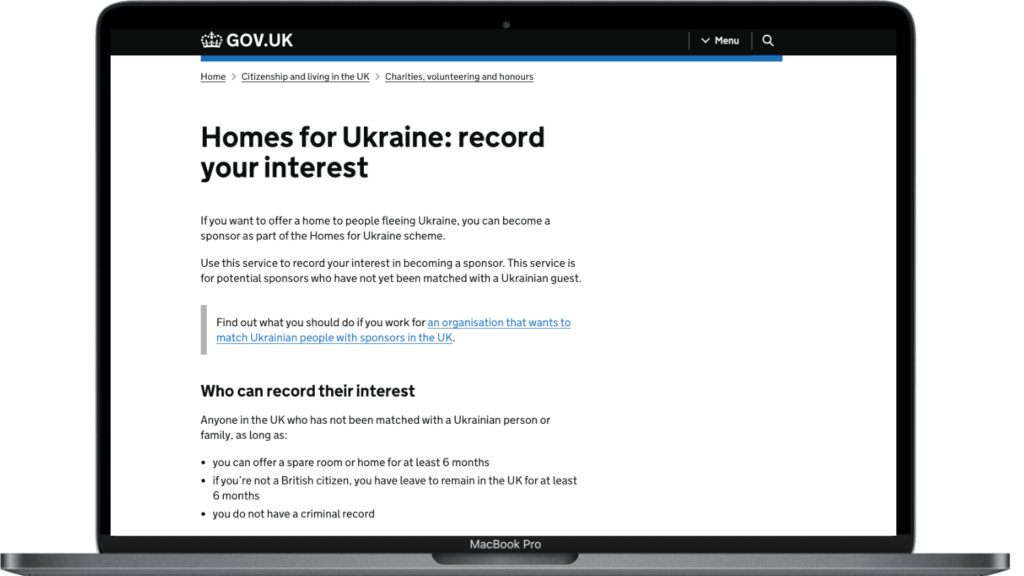Challenge
In March 2022 we worked with the Department for Levelling Up, Housing and Communities (DLUHC) to support the rapid design, build and iteration of the Homes for Ukraine service. The service needed to urgently meet the needs of sponsors (communities and local authorities) looking to help those fleeing the war in Ukraine.

Our approach
We wasted no time getting the project off the ground, delivering a minimum viable product in 2 weeks. As the needs of the project changed, our team grew to include diverse expertise spanning cloud and engineering, data, user-centred design and more.
Once the service went live, our collaboration with DLUHC continued as we worked on a monitoring and support service. Our team worked to make sure the service hit all uptime targets and incident response service level agreements (SLAs) to support sponsors quickly. We supported the service 24/7 and took an Agile approach to service management. This way we were able to make sure that ongoing development of the service and support of incidents on the live service were balanced.
Results we achieved together
We left the team with recommendations on transitioning from rapid response to a solid business as usual framework. This included different ways to scale the team as needs changed. As part of this we supported the transition of the service back to DLUHC. This included knowledge transfer to non-Made Tech team members and new senior management from DLUHC.
Following this we have continued to work with DLUHC to deliver further discovery and alpha phases to research and test new concepts for developing the service for the longer term to create a repeatable and reusable service should this type of a crisis happen again.
Working with policy makers
We bridged the gap between policy, digital delivery and service management using user insights to drive decision-making. We mapped the end to end service to help ease decisions for ongoing improvement, working closely with policy teams. The team can now make iterative changes to the service that improve the user experience while still responding quickly to policy changes.
Technology and features
- Ruby on Rails
- Running on GovPaaS
- Database is PostgreSQL
- Uses Redis for throttling and for delayed jobs using Sidekiq
- Sends notification emails (delayed job) via GOV.UK Notify
- Sends data to Foundry (Palantir Case Management System) via HTTP API
- Monitored with Prometheus
- Deployed via GitHub Actions
- Alerting and incident management via PagerDuty




